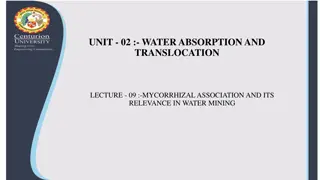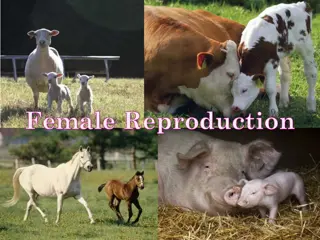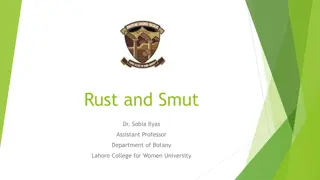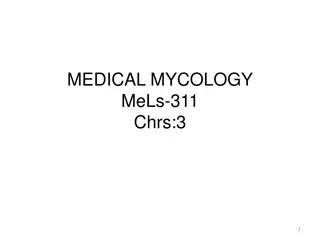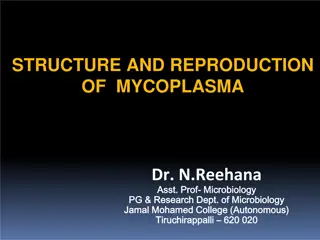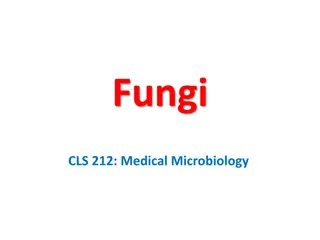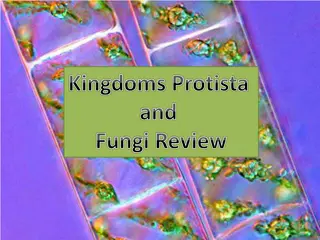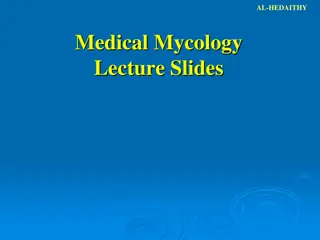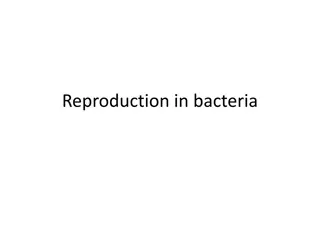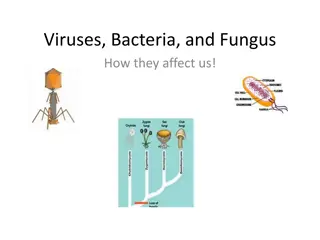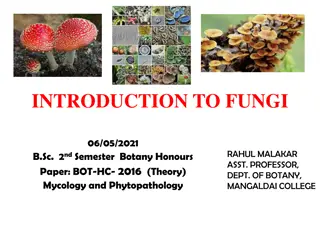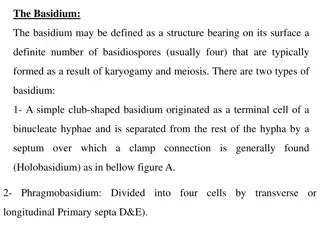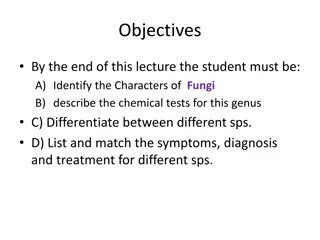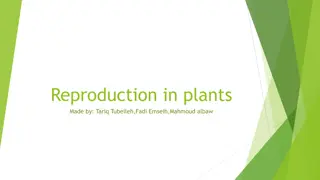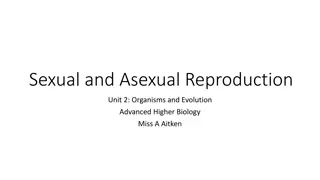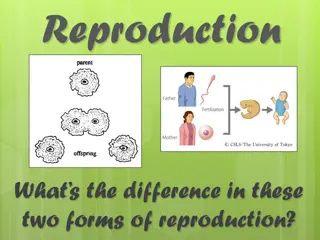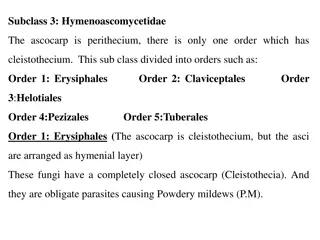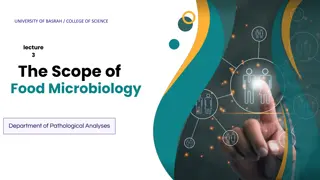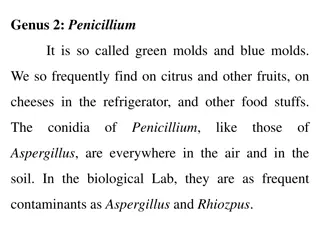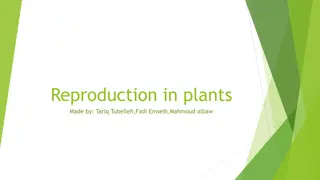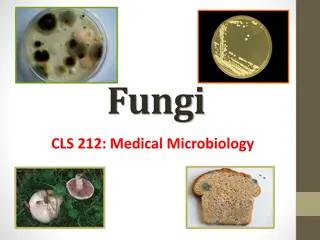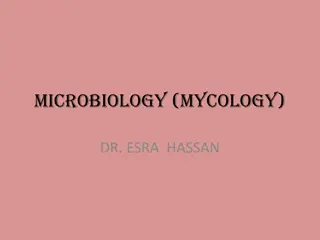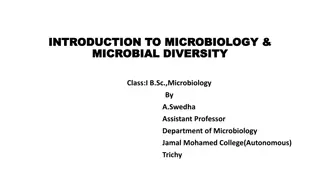Mycorrhizal Association and Its Importance in Water Mining
Mycorrhizal association plays a crucial role in facilitating nutrient and water absorption for plants through a symbiotic relationship with fungi. This relationship enhances the plant's ability to acquire minerals from the soil while providing essential compounds to the fungi. The mycorrhizal associ
3 views • 6 slides
Understanding Human Fertility, Reproduction, and Miscarriage
Explore the complexities of human fertility, reproduction, and the emotional impact of miscarriage. Learn about pregnancy, infertility, menopause, and the dynamics of conception. Gain insights into the causes of infertility, the process of reproduction, and the prevalence of miscarriages at differen
2 views • 13 slides
Understanding Female Reproduction System
The female reproduction system plays a crucial role in producing fertile eggs, hormones, and facilitating fertilization, pregnancy, and birth. Key terms like estrous and estrus, ovulation, and folliculogenesis are essential to grasp. The female reproductive tract consists of tubular organs like the
0 views • 27 slides
Understanding Reproduction: Pollen, Eggs, and Life Cycles in Plants
Reproduction in plants involves the transfer of pollen to eggs, leading to fertilization and the formation of new life. Male animals produce sperm, while females produce eggs, which fertilize when they meet. Different animals exhibit external or internal fertilization, with varying numbers of offspr
1 views • 13 slides
Understanding Rust and Smut Fungi in Basidiomycotina
Basidiomycotina is a diverse group of fungi encompassing classes like Teliomycetes and Hymenomycetes. Rust and smut fungi belong to the class Teliomycetes, characterized by dikaryotic resting spores and unique modes of reproduction. Within the Teliomycetes, the order Uredinales, known as rust fungi,
0 views • 21 slides
An Overview of Medical Mycology: Fungi and Their Characteristics
Medical mycology, focusing on fungi that infect humans, explores the study of fungi, their morphology, classification, and diseases. Fungi, non-photosynthetic organisms, lack chlorophyll and depend on external organic sources for nutrients. With an eukaryotic nature, fungi exhibit less differentiati
0 views • 68 slides
Understanding Fungi Diversity and Infections in Microbiology
Explore the world of fungi and fungal infections in this foundation block of microbiology. Learn about medically important yeasts, mold fungi, major fungal diseases, antifungal agents, and infection acquisition methods. Dive into hypersensitivity reactions, mycotoxicoses, and various types of fungal
1 views • 19 slides
Mycoplasma: Structure, Reproduction, and Characteristics
Detailed exploration of Mycoplasma covering its structure, reproduction, and general characteristics. Discusses the ultrastructure, species like Mycoplasma pneumonia and Mycoplasma hominis, and their unique traits such as lack of cell wall, pleomorphism, and reproduction methods. The article also to
0 views • 14 slides
Understanding Chytridiomycota: The Flagellated Fungi
Chytridiomycota is a phylum of fungi distinguished by having motile spores with a single posterior flagellum. They are primarily aquatic, parasitic on algae and animals, and play a role in plant diseases. Their unique characteristics include alternation of generation and somatic phase with rhizoids.
8 views • 11 slides
Reproduction in Organisms: Overview and Types
Understanding the concept of reproduction in organisms, this content delves into the different modes of reproduction such as asexual and sexual, with examples and illustrations. It covers the life spans of various organisms and details various methods of asexual reproduction like fission, budding, s
0 views • 23 slides
General Characteristics of Phycomycetes in Fungi Classes
Fungi are classified into four classes based on hyphae, spores, and reproduction methods. Phycomycetes, as an algal-like fungi class, showcase varied forms with reproduction mainly through sexual or asexual means. The thallus structure varies from one-celled to well-branched mycelium, and reproducti
0 views • 22 slides
Understanding the Fascinating World of Fungi: Mycology Insights
Explore the realm of fungi through the lens of mycology, delving into their diverse characteristics, including their eukaryotic nature, heterotrophic lifestyle, and impact on various ecosystems. Discover how fungi play crucial roles as saprophytic, symbiotic, or parasitic organisms, influencing food
0 views • 26 slides
Understanding Different Types of Reproduction in Organisms
Unwanted materials can be passed directly or indirectly, impacting the complexity of systems and bodies. Reproduction methods include sexual and asexual, each with unique processes and characteristics. Asexual reproduction involves division and growth, while sexual reproduction combines hereditary i
1 views • 105 slides
Exploring Kingdoms Protista and Fungi: Characteristics and Structures
Dive into the world of Protista and Fungi through this interactive review. Discover the unique characteristics of protists, identify different types of protists, and learn about essential structures in protists such as contractile vacuoles. Explore the significance of compounds like fucoxanthin in b
0 views • 27 slides
Comprehensive Overview of Medical Mycology and Fungal Structures
Explore the field of medical mycology through lecture slides by AL-HEDAITHY covering various topics such as basic mycology, superficial mycoses, primary systemic mycoses, fungal structures, and reproduction in fungi. Dive into details about different fungal infections, their characteristics, forms o
0 views • 94 slides
Understanding Bacterial Reproduction: A Comprehensive Overview
Explore the various types of reproduction in bacteria, including asexual reproduction through binary fission, as well as the intricate process of endospore formation for survival in harsh conditions. Discover how bacterial cells exchange genetic material in sexual reproduction through conjugation, t
0 views • 19 slides
Understanding How Viruses, Bacteria, and Fungi Impact Human Health
Explore the intricate world of viruses, bacteria, and fungi and how they interact with living organisms. Learn about the structure and functions of viruses, the role of bacteria in diseases, and the implications of fungi on human health. Discover the different ways these microorganisms affect us and
0 views • 37 slides
General Characteristics of Fungi and Mycology Overview
Fungi, diverse eukaryotic organisms, exhibit various characteristics such as heterotrophic nature, distinct cell wall composition, and different modes of reproduction. Mycology, the study of fungi, delves into their classification and functions. Fungal cells may be unicellular or filamentous, with m
0 views • 15 slides
Understanding Reproduction in Living Organisms
Reproduction in living organisms involves both sexual and asexual methods, with each having unique processes. Sexual reproduction involves the fusion of genetic material from two individuals, while asexual reproduction results in genetically identical offspring. Different forms of plant reproduction
0 views • 14 slides
Understanding Reproductive Modes: Asexual vs. Sexual
Reproduction can occur through asexual or sexual means, each with its distinct processes and outcomes. Asexual reproduction involves only one parent and produces genetically identical offspring, while sexual reproduction involves the fusion of specialized sex cells from two parents to create genetic
1 views • 46 slides
Understanding Rhizopus Reproduction: Triggers and Advantages
Discover the adverse conditions that trigger sexual reproduction in Rhizopus along with the advantages of zygospore formation. Explore the fungal lifecycle and ecological benefits provided by these processes in this informative iQuiz on fungi.
0 views • 50 slides
Understanding Basidium: Structure and Classification of Basidiomycetes
The basidium is a key structure in fungi bearing basidiospores formed through karyogamy and meiosis. Basidiomycetes are classified into sub classes based on basidium types such as Heterobasidiomycetidae and Homobasidiomycetidae. Uredinales and Ustilaginales are orders of basidiomycetes involving rus
0 views • 6 slides
Overview of Marine Fungi and Their Habitats
Marine fungi are diverse species that inhabit marine environments, with some being obligate marine fungi while others can adapt to various habitats. They play essential roles in marine ecosystems by decomposing organic matter and interacting with other organisms. Factors affecting their distribution
2 views • 13 slides
Understanding Fungi: Characteristics and Types in Medical Mycology
Explore the world of fungi in medical mycology, including their characteristics, chemical tests, species differentiation, symptoms, diagnosis, and treatment. Learn about dermatophytosis, dermatomycosis, actinomyces, and the differences between fungi and bacteria. Discover the various types of fungi,
0 views • 68 slides
Understanding Yeasts and Rhizopus in the Fungi Kingdom
Explore the characteristics of yeasts and Rhizopus within the Fungi kingdom through a series of quiz questions. Learn about their habitats, modes of reproduction, and unique features that distinguish them as fungi. Test your knowledge and delve into the fascinating world of these microorganisms.
0 views • 50 slides
Reproduction Methods: Asexual vs. Sexual Reproduction in Organisms
Asexual and sexual reproduction are two fundamental methods in nature, with asexual reproduction producing genetically identical offspring and sexual reproduction resulting in genetic variation. Asexual methods include fission, budding, fragmentation, and parthenogenesis, while sexual reproduction i
1 views • 6 slides
Understanding Reproduction in Plants: Types, Processes, and Examples
Reproduction in plants involves both sexual and asexual methods, each with distinct processes and outcomes. This article delves into the types of reproduction, including sexual and asexual processes, explaining their mechanisms, examples in plants, and the importance of pollination. It contrasts ase
0 views • 25 slides
Understanding Asexual Reproduction in Living Organisms
Explore the fascinating world of asexual reproduction in living organisms through informative images and descriptions covering various forms such as binary fission, budding, fragmentation, and regeneration. Learn how asexual reproduction differs from sexual reproduction and discover examples of orga
0 views • 15 slides
Understanding Reproduction: Sexual vs Asexual and the Paradox of Sex
Explore the benefits and drawbacks of sexual and asexual reproduction in organisms, why both forms exist, and the paradox of sex. While asexual reproduction offers efficiency and simplicity, sexual reproduction introduces genetic diversity and complexity. Discover how different species, including pr
0 views • 8 slides
Reproduction in Organisms: A Comparison of Sexual and Asexual Methods
Reproduction in organisms involves two main methods - sexual and asexual. In sexual reproduction, two parents contribute genetic information, leading to unique offspring, while asexual reproduction involves a single parent producing genetically identical offspring. This article explores the differen
0 views • 16 slides
Understanding Types of Reproduction in Organisms
Organisms reproduce through asexual and sexual reproduction methods. Asexual reproduction involves one parent and produces uniform offspring, like in binary fission, budding, and regeneration. Sexual reproduction involves two parents and results in offspring with varied traits. Both methods have the
0 views • 24 slides
Asexual Reproduction and Passing of Traits
Asexual reproduction involves cell division to create genetically identical offspring. This process includes binary fission, budding, fragmentation, and vegetative growth. Offspring produced through asexual reproduction inherit traits directly from the parent organism. Understanding asexual reproduc
1 views • 24 slides
Fungal Classification and Reproduction in Hymenoascomycetidae Subclass
Hymenoascomycetidae subclass includes orders like Erysiphales, Claviceptales, Helotiales, Pezizales, and Tuberales. Erysiphales fungi cause Powdery Mildews with closed ascocarps, while Claviceptales produce filamentous ascospores. Asexual reproduction involves conidiophores, while sexual reproductio
0 views • 8 slides
Insights into Airborne Microorganisms and Fungi: Implications for Food Safety
Airborne microorganisms and fungi play crucial roles in food microbiology, with various species surviving in the atmosphere despite hostile conditions. Bacteria like Bacillus and Streptomyces disperse through air turbulence, while fungi such as Penicillium and Aspergillus produce spores resistant to
0 views • 9 slides
Fascinating Insights into Lichens: Algae, Fungi, and Ecological Succession
In the world of lichens, a unique symbiotic relationship between algae and fungi thrives, showcasing the wonders of mutualism. Through photosynthesis, algae produce glucose and oxygen, while fungi provide stability and protection on rocks. This partnership plays a crucial role in primary succession,
0 views • 4 slides
Insights into Penicillium and Gymnoascaceae Fungi
Penicillium fungi, known as green molds and blue molds, are commonly found on citrus fruits, cheeses, and other food items. Various Penicillium species can cause fruit decay and are used in antibiotic production. Gymnoascaceae fungi include dermatophytes and systemic pathogens for humans. Nannizzia
0 views • 6 slides
Understanding Plant Reproduction: Types, Processes, and Examples
Explore the fascinating world of plant reproduction through this comprehensive guide. Learn about sexual and asexual reproduction, their differences, and examples in plants. Discover the importance of pollination, the roles of plant parts, and the various methods of asexual reproduction in plants. E
0 views • 26 slides
Understanding the Fascinating World of Fungi in Medical Microbiology
Fungi are eukaryotic organisms with diverse characteristics and roles in nature. They are essential for the ecosystem, being heterotrophic and distinct from plants. In medical microbiology, fungi play crucial roles, such as in the production of antibiotics and foods like cheese. The classification,
0 views • 34 slides
Understanding Fungi: A Brief Overview of Mycology in Microbiology by Dr. Esra Hassan
Fungi, classified as living eukaryotic microorganisms, exhibit diverse structural forms such as yeasts and molds in mycology. This field explores the characteristics, pathogenicity, and importance of fungi, particularly Candida in oral mycology. Discover the fundamental concepts of morphology, hypha
0 views • 32 slides
Exploring Microbial Diversity: Fungi in Microbiology
Microbes are vital single-celled organisms that exist everywhere, some beneficial while others harmful. Fungi, a crucial group of microbes, can be unicellular or multicellular, with diverse roles in nature and human activities. This article delves into the characteristics and classification of fungi
0 views • 15 slides
